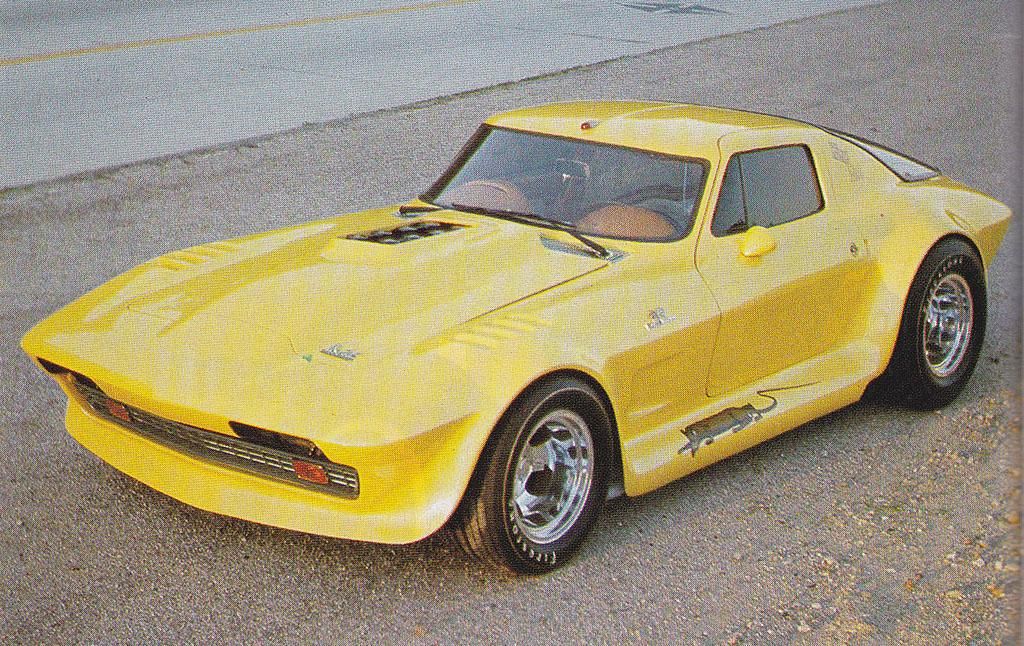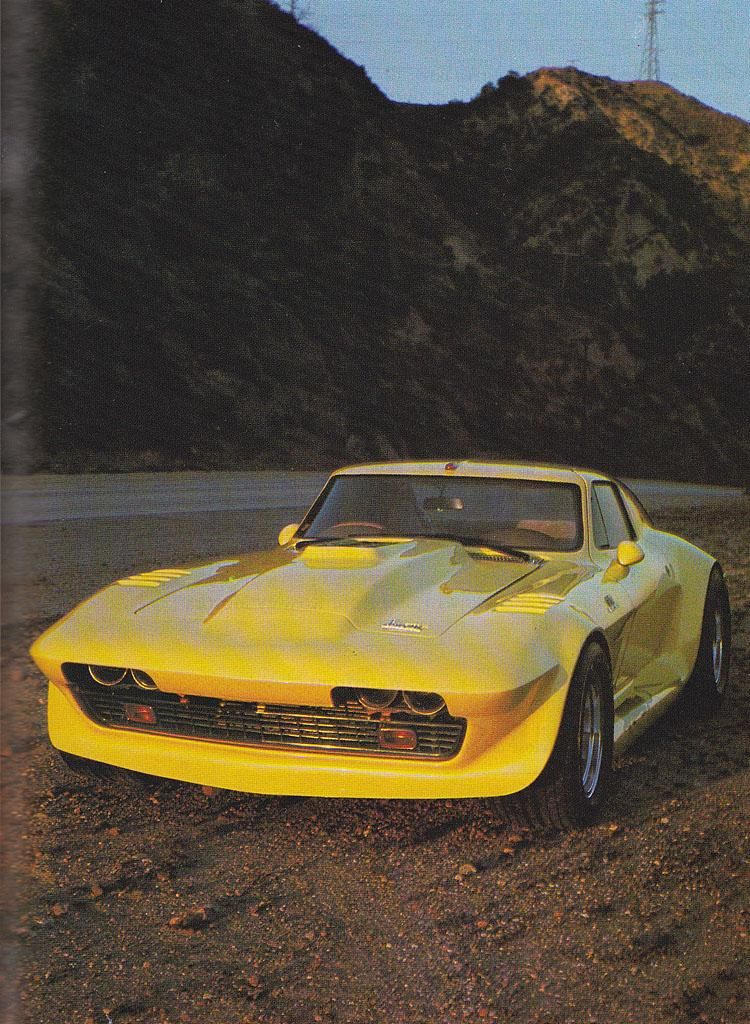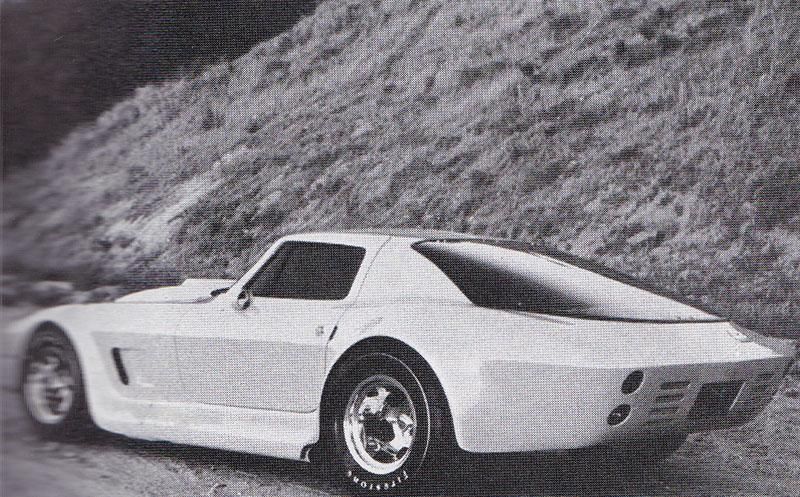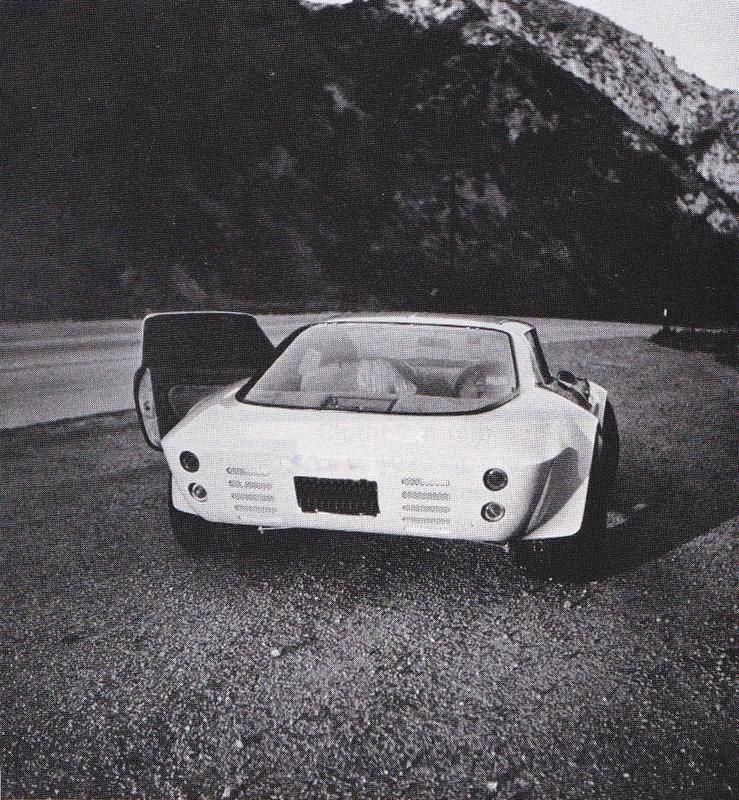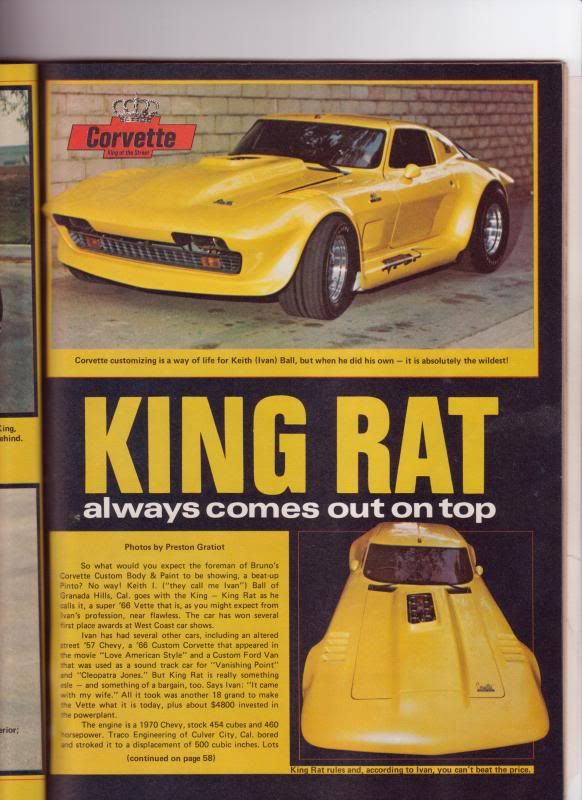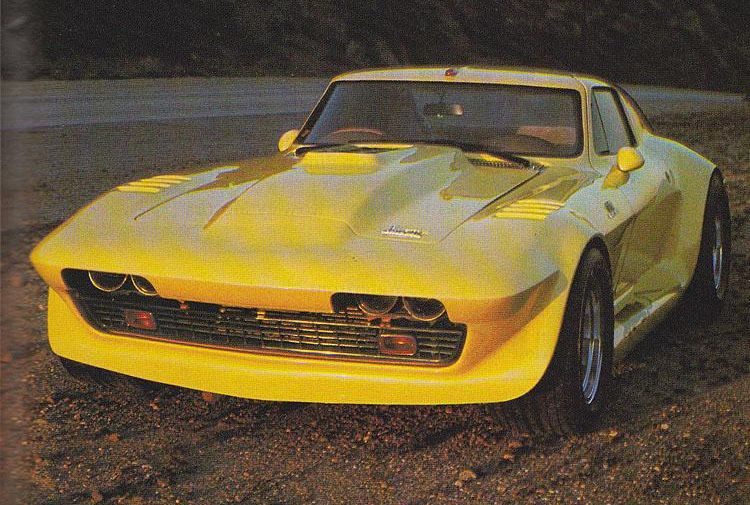Cars can be classified into a few different categories with regards to how known their existence is. You have the well-known, the rare, the obscure, and the mysterious. And while the Chevrolet Corvette is certainly a well-known name, even amongst non-car people, the Corvette King Rat by Keith Bell is certainly a mystery. Nevertheless, we managed to uncover some details about it.
1966 Chevrolet Corvette King Rat
- Make: Array
- Model: 1966 Chevrolet Corvette King Rat
- [do not use] Vehicle Model: Array
The basis for the King Rat was a 1966 Chevrolet Corvette Stingray convertible with a 327 small-block V-8. It was built at Bruno’s Custom Corvette Shop, in Studio City, California. It was actually the personal vehicle of Keith “Ivan” Ball – the head foreman at Bruno's. According to reports, Bell initially wanted to restore the 1966 "Vette" to its former glory, but things obviously escalated.
The bespoke body was believed to have been made out of fiber-glass, just like the original C3 Corvette. It was quite a bit wider than stock, featuring flared fenders, seamlessly merged together by the new rocker panels. The front end looks like it was inspired by the Corvette C2 Gran Sport and featured a big open grille, a chin spoiler that transitioned nicely into the front fenders, and static headlights.
The rear was still recognizable as a C2 Corvette, but the taillights were now stacked on top of one another and the rear window came from a DeTomaso Vallelunga. The unique body was then finished in bright yellow, and on the side, it had a massive rat decal, to go with the King Rat name.
The conversion was believed to be done sometime in the 1970s since the Corvette King Rat was featured on the cover of a 1976 car magazine.
The car reportedly went as fast as it looked, as Keith Bell’s idea was to build a 180 mph (293 km/h) streetcar that could also be taken to the track. The 1966 Corvette that was used as the basis for the King Rat did not feature the original 327 V-8. Instead, it had a 454 V-8 from a 1970 Chevrolet, producing around 460 horsepower.
The big-block Chevy V-8 had its engine displacement increased from 454 to 500 cubic inches. The engine also received a strengthened bottom end, aluminum heads modified by Airflow Research, and a 13:1 compression ratio. As a result, the engine redline was moved from 6,000 to 8,000 RPM. The engine was reportedly good for over 700 horsepower.
The big-block Chevy V-8 had its engine displacement increased from 454 to 500 cubic inches. The engine also received a strengthened bottom end, aluminum LS heads modified by Airflow Research, and a 13:1 compression ratio. As a result, the engine redline was moved from 6,000 to 8,000 RPM. The engine was reportedly good for over 700 horsepower.
Sources indicate that the car is in decent shape and will soon undergo restoration. Although we cannot confirm that with certainty, we will continue to dig around for any information on the truly obscure, over-the-top, Corvette King Rat.

